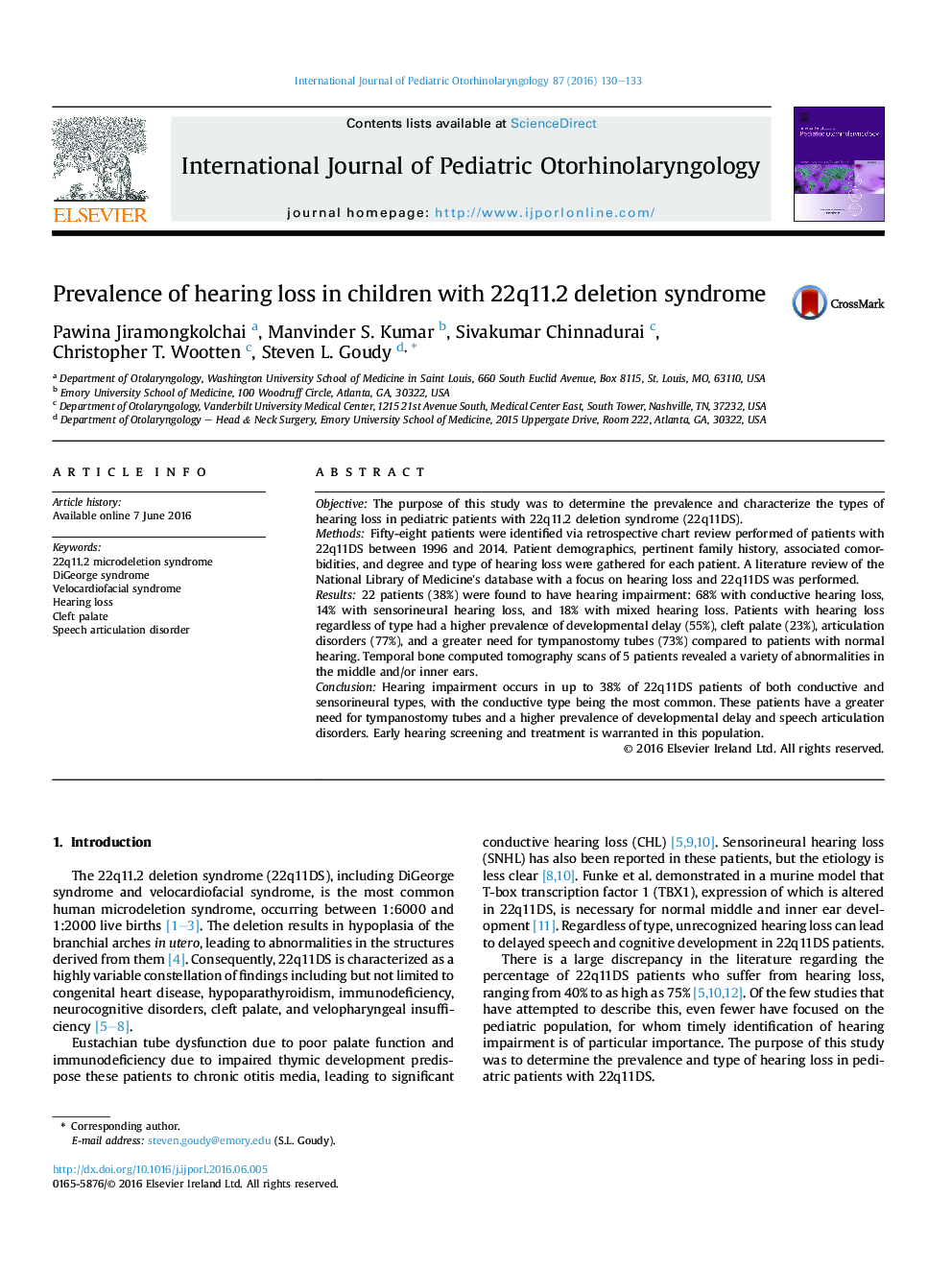| Article ID | Journal | Published Year | Pages | File Type |
|---|---|---|---|---|
| 4111454 | International Journal of Pediatric Otorhinolaryngology | 2016 | 4 Pages |
ObjectiveThe purpose of this study was to determine the prevalence and characterize the types of hearing loss in pediatric patients with 22q11.2 deletion syndrome (22q11DS).MethodsFifty-eight patients were identified via retrospective chart review performed of patients with 22q11DS between 1996 and 2014. Patient demographics, pertinent family history, associated comorbidities, and degree and type of hearing loss were gathered for each patient. A literature review of the National Library of Medicine's database with a focus on hearing loss and 22q11DS was performed.Results22 patients (38%) were found to have hearing impairment: 68% with conductive hearing loss, 14% with sensorineural hearing loss, and 18% with mixed hearing loss. Patients with hearing loss regardless of type had a higher prevalence of developmental delay (55%), cleft palate (23%), articulation disorders (77%), and a greater need for tympanostomy tubes (73%) compared to patients with normal hearing. Temporal bone computed tomography scans of 5 patients revealed a variety of abnormalities in the middle and/or inner ears.ConclusionHearing impairment occurs in up to 38% of 22q11DS patients of both conductive and sensorineural types, with the conductive type being the most common. These patients have a greater need for tympanostomy tubes and a higher prevalence of developmental delay and speech articulation disorders. Early hearing screening and treatment is warranted in this population.
